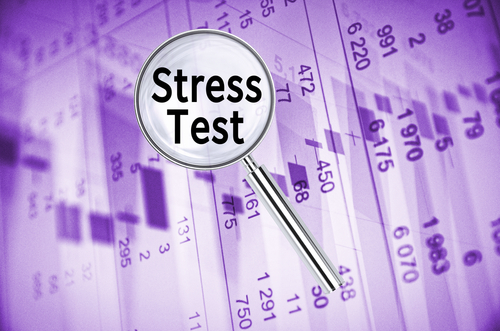The Federal Reserve Board released the hypothetical scenarios for its annual bank stress tests last week.

These tests help ensure that large banks can lend to households and businesses even in a severe recession. This year, 34 large banks will be tested against a severe global recession with heightened stress in commercial real estate and corporate debt markets.
Specifically, these stress tests evaluate the resilience of large banks by estimating losses, net revenue, and capital levels—which provide a cushion against losses—under hypothetical recession scenarios that extend more than two years into the future. They are strictly hypothetical situations and not forecasts.
In the 2022 stress test scenario, the U.S. unemployment rate rises 5.75 percentage points to a peak of 10 percent over two years. This increase is accompanied by a 40 percent decline in commercial real estate prices, widening corporate bond spreads, and a collapse in asset prices, along with increased market volatility.
Banks with large trading operations will be tested against a global market shock component that primarily stresses their trading positions. Further, banks with substantial trading or custodial operations will be tested against the default of their largest counterparty.
The 34 banks include Ally Financial, American Express, Bank of America, Bank of New York Mellon, Barclays US, BMO Financial, BNP Paribas USA, Capital One Financial, Charles Schwab, Citigroup, Citizens Financial, Credit Suisse Holdings (USA), DB USA, Discover Financial Services, Fifth Third Bancorp, Goldman Sachs Group, HSBC North America Holdings, Huntington Bancshares, JPMorgan Chase & Co., KeyCorp, M&T Bank, Morgan Stanley, MUFG Americas, Northern Trust, PNC Financial Services Group, RBC US, Regions Financial, Santander Holdings USA, State Street, TD Group US, Truist Financial, UBS Americas, U.S. Bancorp, and Wells Fargo.